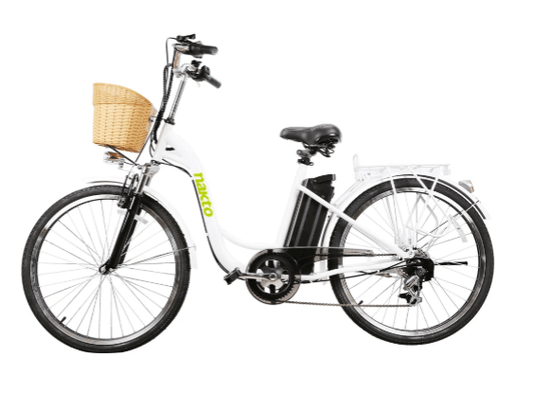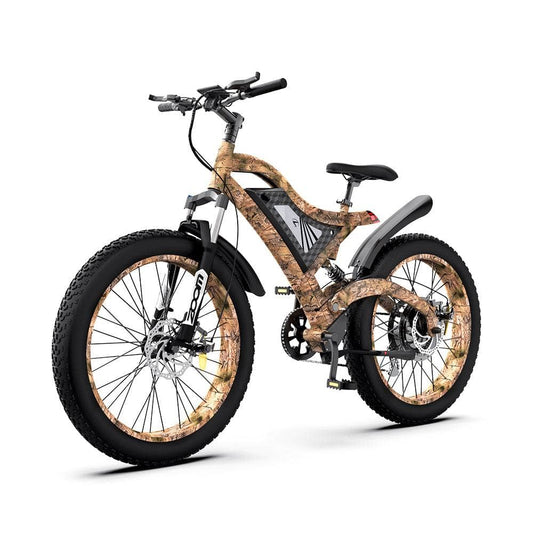Cold Weather Bike Riding
As fall approaches, there are many things to consider as the temperature and daylight hours change. If you want to enjoy electric bike riding in the autumn, winter and early spring, you must adjust your biking habits, clothing and gear selection to the season as well.
Autumn Electric Bike Riding Safety
Here at Journeybikes.com, we love an adventure and the adrenaline rush of electric bike riding in the outdoor elements, whatever they may be that day. But safety is priority, and if you head out for a electric bike trip and forget to dress or pack gear for the changing temps and daylight hours, there could be dangerous consequences.
The good news? Cold weather electric bike riding gear and clothing can be versatile and used in not just Autumn, but winter and early Spring as well. Of course, the type of clothing and gear you will need will also be heavily dependent upon your geographical location. Below we speak about the different factors, types of gear and clothing to consider during the colder months of the year.
Less Daylight Hours Each Day
In the USA, the sun rises later and sets earlier as the seasons transition into Fall and Winter. One of the vital safety tips that we stress time and time again are attaching a front and rear light to your bicycle. The best kind of front and rear bicycle light will have at least three settings. A constant steady light, a slow blinking light and a fast blinking light.
We suggest attaching a white front light to your handlebars and a red rear bicycle light to the rear of your bicycle seat. Also, adding a headlamp to your helmet is helpful as well, especially in case you need to read a map or directions while riding at night.
Although we love to strive to leave electronics at home and disconnect while bicycling outdoors, bringing along a charged cellphone can save your life in the case of an emergency. Especially if you plan on biking deep into the wilderness.
Something small and lightweight like this Bicycle Top Tube Phone Bag can store not only your cellphone, but a CO2 Tire Pump, your Bicycle Multi-Tool, handwarmers and a snack!
Going on a longer bicycle trip and need more storage capacity? Try adding one or all three of these bicycle bags to your bicycle: Waterproof Bicycle Handlebar Bag, Triangle Bicycle Frame Bag, and the Large Capacity Bike Saddle Bag.
Cold Weather Bicycle Clothing
We love opting outside, but keep in mind that bicycling leaves you exposed to the elements. People have been skiing in freezing temperatures for hundreds of years, so why do people shy away from biking in the Fall and Winter? You're not enclosed like you are in a vehicle, so you must come prepared for anything that the elements can throw at you.
Layering Clothing for Warmth
Layering is the first rule of thumb when it comes to cycling in the colder temperatures. Each cycling base layer has a slightly different function. At the core, your first layer should be a moisture wicking shirt. Yes, it is cold outside, but your body will still perspire, and you do not want your shirt to become soaked with sweat. You need a material that will wick the moisture away from your body so that you don’t get hypothermia.
Depending upon your geographic location you may need a light second layer or several additional cold weather clothing layers. You can always take off a layer if you become too hot, but you can’t add a layer that you didn’t bring on your bicycle ride, so always layer up! These inner layers’ purpose is primarily to keep you warm.
You could find a nice pair of padded bicycle leggings and even throw on an extra pants layer, preferably a water-resistant, 4-way stretch material like these, over those leggings for an extra layer of protection from the elements.
Always keep in mind that you could be battered with rain, snow, or wind during any electric bike ride. Do not leave any skin exposed and consider extra layers on your lower legs and ankles as well as your forearms and wrists, like arm sleeves and leg warmers.
Your last layer should be windproof and waterproof. That goes for both your lower and upper body clothing layers.
You can even get a 2-in-1 glove, that has a gloved fingers underneath a mitten layer. Or a “lobster” which is a hybrid between a glove and a kitten. There are many bicycling glove options out there, here’s a great article on the best cycling gloves for Autumn/Winter 2019.
Correct Size & Material Clothing
Make sure you get a high-quality pair of gloves; your extremities need extra protection. Gloves should be a snug fit, but not constricting. You should have some “wiggle” room so your fingers can generate and circulate heat within.
Socks are also a priority. Athletic wool socks are a great option to keep your feet dry and warm.
Make use of a full-face helmet, in addition to your neck warmer, thermal underwear thicker pants, jacket and gloves. If you check around you will find all sorts of heated vests, gloves and socks accessible too if you are in a really cold environment.
The quicker you ride the colder you will feel because of wind chill, so take that into account if you are going a long distance.
Keep in mind, this isn’t an article for road biking and therefore we aren’t talking about your typical cycling kits that most road cyclists wear. This article is aimed at the recreational biker, commuter and trail cyclists.
Cleaning and Tuning-Up Your Bicycle
Inspecting, cleaning and tuning-up your electric bike is essential after every ride out. The wet and snowy weather means less traction for bicyclists. Inspect the tread on your tires too. Is the tread worn down and is it time to buy new bicycle tires?
It's crucial to remove any grit and build-up from the frame, cassette and chain. Most electric fat tire bikes with tires that are 4” width or more are capable of riding on the snow. If you don’t have a fat tire bicycle, avoid snow and ice, and do not attempt to ride on these surfaces. And remember, white lines are slippery when it is wet! Try to avoid riding on them as much as possible.
It is true that you should get salt and grit off your electric bike to avoid corrosion, so post-ride towel off your bicycle and cover it to keep it dry.
Just think of the time and gas money that you could save, and your reduced carbon footprint that you would have, if you extend your riding season beyond September? Just do your research, be prepared, and anticipate the most extreme weather so that you and your electric bike stay safe and are ready for all seasons.


![Nakto Elegance 2 Electric City Bike [48V 22"]](http://journeybikes.com/cdn/shop/files/19.jpg?v=1739895302&width=533)
![X-Treme Newport Elite Beach Cruiser Electric Bike [24V 300W]](http://journeybikes.com/cdn/shop/products/x-treme-electric-bikes-one-size-metallic-blue-x-treme-newport-elite-24v-beach-cruiser-ebike-3607137910898.jpg?v=1572877629&width=533)

